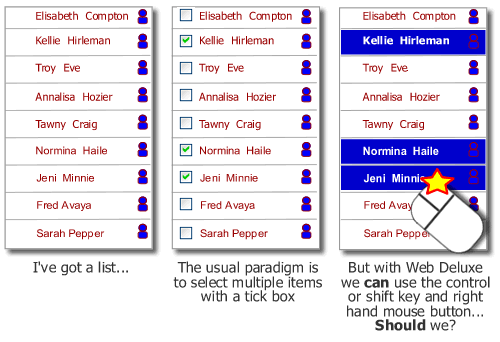Paired programming can be daunting to developers who have not done it before. The thought of some someone else looking over your shoulder whilst you work can be met with resistance. And yet the benefits of the transparency that paired programming brings are well documented.
B2B organisations display similar traits to the developer who is resistant to paired programming. They don’t want anyone looking over their shoulders until they are comfortable with what they are doing. And that includes customers. In my experience, the bigger the “B” and the smaller the “2B” the harder it is to gain access to the people we are developing the product for.
It’s not like this in the B2C world, where organisations understand the need to talk to their customers, to do market research, to test propositions. In the B2B world, organisations become far more protective. There is a fear that if we talk to our customers we will be making promises that we cannot keep. We will be building expectations that will inevitably be broken. In the B2C world you can show what you like to customers, if the final product bears no resemblance to the ideas we’ve tested in focus groups it doesn’t matter. The conversation with the customer is part of the process. We do not assume any “customer memory,” indeed the fact that we have explored different ideas and propositions with customers is seen as a positive; it can feature in the PR associated with the product release. If you release a product to market that looks nothing like what you’d explored in early focus groups it really doesn’t matter. You are selling to a segment that is bigger than a focus group of 12. But what if you customer base is small. What if there is a customer memory, that the people you test propositions with are the people we depend on selling to. The people who will keep us in business. In such a scenario it is understandable why you become protective of your ideas and fear saying anything to your customers until you are confident that you can deliver it. Trouble is, by that stage it may be too late. You are committed to a path of action that can be costly to change. What is required is some transparency and honesty; creating a dialogue as early as possible.
So here is the challenge for B2B organisations with a small, high value customer base. Open yourselves up. Be honest, open and transparent. Web 2.0 is all about collaboration and social networking. That shouldn’t just be about me sharing my photos on flickr, my videos on YouTube, my bookmarks on delicious. Product managers should be blogging about what is happening on the product they are developing for their customers. Customers should be commenting on the progress that is being made; they should have a direct channel to the development team, not via layers of corporate Chinese whispers. Here’s a challenge to the business in B2B organisations; get blogging. Stop fearing your customers and worrying about failing to meet what you perceive them to expect. Once you are transparent to your customers and proactively manage their expectations you can venture on a more successful and profitable journey as partners, not as adversaries.

